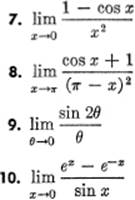

Remaining sentences are then “tacked on” to the prior sentence so that each sentence begins as the previous one expires.

Some examples of the different types of sentencing are provided below: There are a multitude of types of sentencing that a judge can impose upon a defendant in addition to, or instead of, a determinate or indeterminate sentence. Similarly, critics also feel that offenders who deserve to remain locked up longer end up getting out too early because of the networking they engage in while behind bars. Too often, critics claim, minorities and prisoners who don’t make the proper connections while in prison end up receiving decisions that are overly harsh from the parole board. For example, indeterminate sentencing can potentially lead to sentences that are both discriminatory and illogical. This means that parole boards are unnecessary, and inmates also do not receive credit toward early release for their participation in rehabilitation programs.Ĭonversely, however, critics of indeterminate sentencing believe that such a structure gives the parole board too much power. However, this does not always happen, especially if they are being released due to overcrowding concerns.Īs for the cons, determinate sentencing has been blamed for the increase in prison populations because it eliminates the potential for early parole. Offenders are to be carefully evaluated before they are released back to the streets.

The victim(s) of the crime may also submit a statement with regard to whether they are comfortable with the inmate receiving an early release. Additionally, a prisoner’s criminal history is considered by the parole board, as is the crime that landed him in jail in the first place. Of course, good behavior does not guarantee an early release. Prison officials tend to respond more positively to indeterminate sentences because of the incentive that it gives inmates to behave while they are incarcerated. Further, those who show more progress than other inmates may be released closer to the minimum end of their sentences, rather than at the maximum point. States that follow the laws associated with indeterminate sentencing hope that by giving people the chance to participate in rehabilitation, they may be inspired to “get better” so that they can have a shot at an early release. Pros and Cons of indeterminate Sentencing This means that a judge cannot offer probation or another alternative to prison if state law calls for a prison sentence to be imposed. Similarly, states that practice determinate sentencing prohibit judges from straying from the penalty that is to be imposed. This is due to minimum sentences that are imposed by law and that depend on the type of crime committed. States that practice determinate sentencing prohibit judges from determining the length of an individual’s sentence. Statements made by the inmate indicating his intention to re-offend upon his release Indeterminate Sentencing vs.



 0 kommentar(er)
0 kommentar(er)
